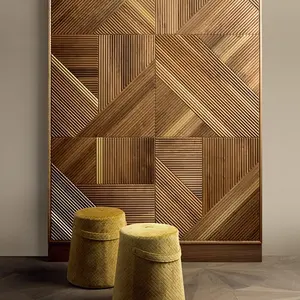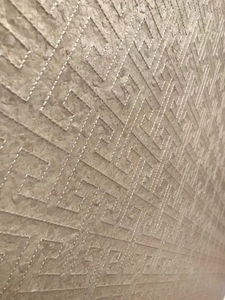(179105 products available)
































































































 Ready to Ship
Ready to Ship

































































































































A wall cover is a material used to cover walls for protection, insulation, or aesthetic purposes. They come in various materials, designs, and styles. Below are the different types of wall covers:
Wall Covering
Wall coverings are decorative materials applied to walls for protection and aesthetics. They include wallpapers, murals, and wall decals.
Wood Wall Covers
Wood wall covers are decorative and functional elements that can be utilized both indoors and outdoors. They offer a variety of aesthetic and practical benefits.
These covers are made from different types of woods, including; cedar, pine, and redwood, which are commonly used due to their durability and resistance to rot, especially in outdoor applications. Wood wall covers can be classified based on their construction and installation techniques.
They include; tongue and groove, shiplap, board and batten, and wood siding. Wood wall covers add a natural and warm feel to a space. They are frequently used in living rooms, bedrooms, and even outdoor patios.
Wood covers for walls are easy to install and can be customized to suit different styles and preferences. They are ideal for DIY enthusiasts and professionals alike.
Metal Wall Cover
Metal wall covers are panels made of metal, including aluminum, steel, brass, copper, or other alloys. They are usually used for decorative and functional purposes. Metal wall covers are durable, low-maintenance, and resistant to wear, tear, and rot.
They are frequently used in kitchens, bathrooms, and commercial spaces.
Metal wall covers come in different finishes, including brushed, polished, matte, and textured. They add a modern and industrial feel to a space. Metal wall covers for interior walls are easy to clean and maintain.
Fabric Wall Cover
Fabric wall covers are decorative materials made from various fabrics, including silk, cotton, linen, and polyester. They are usually used to enhance the aesthetic and functional aspects of a space. Fabric wall covers add texture, color, and warmth to a room. They are frequently used in living rooms, bedrooms, and home theaters.
These wall covers are available in different patterns and styles, including embroidered, printed, and solid-colored.
Fabric wall covers can be easily customized to match the decor and design of a space. They provide a soft and elegant touch to interior design.
Glass Wall Cover
Glass wall covers are decorative elements made of glass materials. They are used to enhance the beauty and functionality of interior design walls. Glass wall covers create a sense of openness and light, making spaces appear larger and more airy.
They are frequently used in modern and contemporary interior designs. Glass wall covers are available in different types, including; frosted, etched, stained, colored, and patterned glass. They add a touch of elegance and sophistication to a room.
Decorative wall panels are an effective way to cover walls and improve the appearance of a room. They are functional and have different features, including:
Aesthetic Appeal
The decorative wall panels are visually pleasing. They have different colors, patterns, and textures that can match room styles. The panels add beauty to plain walls, making them a practical choice for homeowners who want to improve the appearance of their rooms.
Easy Installation
One important feature is that they are easy to install. Most panels have adhesive backs, so users can stick them on the wall without nails or screws. This makes it simple for anyone to change their wall - no special tools are required. Whether made of wood, vinyl, or other materials, users can transform their space in just a few hours.
Durability
The wall cover panels are durable. They can last a long time without showing signs of wear or damage. Most panels are made from materials that resist scratches, dents, and stains. Unlike paint or wallpaper, the panels do not tear or fade over time. This means the panels maintain their appearance and beauty for many years, making them a good long-term investment for any space.
Insulation
Insulation is an important feature of decorative wall panels. Some types of panels can help keep homes warm in the winter and cool in the summer. These panels block outside temperatures from coming inside. This makes homes more comfortable and saves energy. Insulated wall panels are an effective way to maintain a consistent temperature inside.
Soundproofing
Some decorative wall panels help reduce noise. They absorb sound and make rooms quieter. This is important for offices or homes near loud places. Soundproof panels block echoes and outside noises, making rooms peaceful.
Wall covers are versatile products used in various industries and applications. Here are some common usage scenarios for wall covers:
Residential Construction:
Wall covers are used in homes to enhance the aesthetic appeal, protect walls, and improve energy efficiency. Examples of wall covers used in residential construction include; wallpaper, paint, wall panels, and stucco.
Commercial Properties:
Office buildings, hotels, restaurants, and retail stores often use wall covers to create a professional and welcoming atmosphere for customers and clients. Examples include; drywall, wall panels, and paint.
Schools and Universities:
Educational institutions use wall covers to create a conducive learning environment and to create a cover that can withstand high levels of wear and tear. Examples include; paint, wallcovering, and wall panels.
Hospitals and Clinics:
Healthcare facilities require wall covers that are easy to clean, hygienic, and durable. Wall covers used in healthcare facilities include; wall panels, vinyl wallcovering, and paint.
Hospitality Industry:
Hotels, resorts, and restaurants use wall covers to create a comfortable and visually appealing environment for their guests. Examples include; wallpaper, wood paneling, and decorative wall covers.
Retail Stores:
Wall covers in retail stores are used to create an attractive display environment for merchandise. Examples include; paint, wallpaper, and acrylic wall cover.
Industrial Facilities:
Manufacturing plants, warehouses, and distribution centers use wall covers that are durable and easy to clean. Examples include; metal wall panels and concrete wall covers.
Religious Institutions:
Churches, temples, and other religious centers use wall covers to create a serene atmosphere. Examples include; paint and decorative wall panels.
Government Buildings:
Wall covers are used in courthouses, city halls, and government offices to create a professional environment. Examples include; wall panels and paint.
Gyms and Fitness Centers:
Wall covers in fitness centers should be durable and easy to clean. Commonly used covers include; wall panels and paint.
Specialized Facilities:
Wall covers are tailored for specific requirements in laboratories, kitchens, and production facilities. Examples include; stainless steel wall covers in kitchens and laboratory-grade wall covers in labs.
Consider the following factors when buying wholesale covered walls:
Target market needs
Identify the needs of the target market and choose wall covers that meet them. For example, if the target market is interior designers, select stylish and modern wall covers. If the target market is contractors, opt for wall covers that are easy to install and durable.
Wall cover type
Each type of wall cover has unique features. Explore them to determine which ones are most preferred by the target market. For example, some prefer wall paint because it is affordable. Others prefer wallpaper because it is stylish. Find out if the target market prefers wood panels, PVC panels, or fabric covers.
Cost of wall cover
Consider the price of each type of wall cover. This will help to select wall covers that fall within a specific budget. It is also important to consider the wholesale price to ensure that there is a profit margin when selling the wall covers.
Wall cover lifespan
All types of wall covers have different lifespans. For example, wallpapers last between 5 and 15 years, depending on the type. Wood panel wall covers can last 60 years or more, while PVC panels can last up to 100 years. Consider the wall cover lifespan to ensure the customer gets value for their money.
Wall cover maintenance
Some wall covers require frequent maintenance, while others do not. For example, fabric covers may need to be dusted or washed, and wood panels may need to be resealed. Consider the maintenance requirements of each type of wall cover to ensure it meets the needs of the target market.
Wall cover brand
Some brands offer high-quality wall covers that last longer and are more stylish. Research the top brands that manufacture the preferred types of wall covers. Read reviews to identify reputable brands before placing an order.
Q1: Does wallpaper cover walls or not?
A1: No, actually not. Wall covering is a term used to describe wallpaper and other materials used to cover walls, such as paint, fabric, and panels.
Q2: What is the difference between wallcovering and wallpaper?
A2: The main difference is that wallcovering can be made from a variety of materials, including natural fibers, vinyl, and paper. At the same time, wallpaper is typically made from paper or vinyl.
Q3: What are the advantages of using wallcovering instead of paint?
A3: There are many advantages to using wallcovering instead of paint. Wallcovering is more durable than paint, meaning it will not chip or peel as easily. It is also easier to clean and can be removed and replaced. Wallcovering is also available in various textures and patterns, allowing for more customization options. Additionally, certain types of wallcovering, such as fabric wallcovering, can help reduce noise.
Q4: What are the disadvantages of using wallcovering instead of paint?
A4: One disadvantage of using wallcovering instead of paint is that it can be more expensive. Wallcovering is also more difficult to install, requiring a professional. It is also essential to choose the right type of wallcovering for the room, as some types are not suitable for certain areas, such as kitchens and bathrooms.
Q5: Do wall covers last longer?
A5: In most cases, wallcoverings last longer than paint. This is because wallcovering is more durable and washable. It is also easier to replace if it becomes damaged.